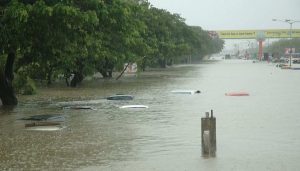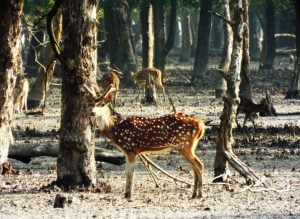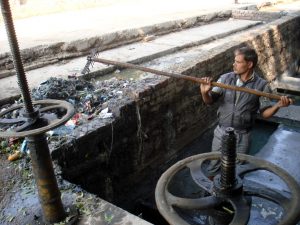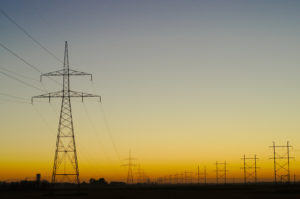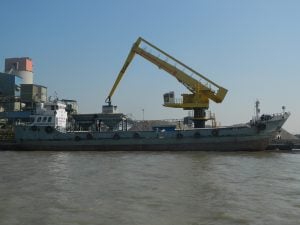Locals in Arunachal Pradesh are resisting more dam building on Siang, as the Brahmaputra is known in the region. In a recent meeting on “Policy Dialogue for Governance of the Brahmaputra River” held in Itanagar, the capital city of Arunachal Pradesh, in November 2016, anti-dam leaders faced off against state government officials and some experts had who favoured dam building on theSiang.
Known as the Yarlung Zangbo in China, the Brahmaputra enters Arunachal Pradesh near Gelling from where it is known as the Siang. The total length of the Siang River is 294 kilometres until it meets the Dibang and Lohit rivers at Sadia in Assam. Since Assam too is affected, civil society groups and individuals have been opposing the construction of big dams there as well. Their appeals to different authorities not to give environmental clearances for the dams being built in the four districts of Siang, East Siang, Upper Siang and West Siang have gone unheard.
“We will protect our land, and fight for it!”
The Siang People’s Forum (SPF) and Lower Siang Dam Affected Peoples’ Forum (LSDAPF), who have been spearheading the anti-mega dam movement in the Siang valley, had appealed to the previous central government, the United Progressive Alliance (UPA), and also to its chairperson, Sonia Gandhi. They have now appealed to the National Democratic Alliance (NDA), led by the Bharatiya Janata Party (BJP), and in a memorandum to the Prakash Javadekar, who was then the Minister of Environment, Forest and Climate Change (MoEFCC), the SPF declared that the four districts would not compromise on their demand of scrapping all mega dams over the Siang river.
Nonetheless the big dams are still being built. While construction on some has been halted by the courts, others continue. Vijay Taram, an anti-dam activist with the Forum for Siang Dialogue, said, “We are not against small dam and dams on tributaries of Siang”, but “big dams will spoil our lives and livelihood. If completed they will flood all fertile agricultural lands, destroying the flora and fauna of entire Siang belt and displace thousands of people of Siang valley. Tribal men will lose their traditional hunting grounds as well as the link to their culture.”
“We did not get our land from the British or Indians,” he said. “We inherited it from our forefathers. We will protect our land, and fight for it!”
Massive impact on ecology and livelihoods
The Siang districts belong to the indigenous communities of the Adi and Galo tribes. Twenty-three of their villages are on the banks of the Siang River, and will be directly affected by the project. Rice is a staple food of Adi and Galo people and wet rice fields are situated just above the Siang River. The planned dam will submerge these fields, threatening the very survival of these tribes. Anti-dam movement leaders say that their right to free, prior and informed consent (as enshrined by the United Nations Declaration on the Rights of Indigenous Peoples) is not only being ignored, but deliberately avoided.
![A typical Adi house in Pasighat [image by Chandan Kumar Duarah]](/wp-content/uploads/2017/01/Adi-tribe-house-in-Pasighat.jpg)
See: India gives green light to build country’s largest dam
A report commissioned by the Central Water Commission noted that, “Siang Lower hydroelectric project (2,700 MW), Siang Upper Stage II (3,750 MW) and Siang Upper Stage I (6,000 MW) are planned to cover almost the entire length of the Siang in India. 208.5 km of the river will be converted into one continuous reservoir as all three projects are planned back-to-back without any free flowing intermediate river stretch.”
Once the dams are built, the Siang basin will never be the same again. Studies by the Central Water Commission point out that the 44 planned dams within India will change the natural flow of the water in 29 rivers and streams. As of now, these rivers and streams stretch out over 514 kilometres. Once the dams are built, all of it would be altered — 353 kilometres will turn into reservoirs, and close to 161 kilometres will be converted into tunnels.
This would inevitably change the basin’s 15,000 square kilometres of forest. The Siang basin is home to 11 different kinds of forests, 1,349 plant species and 1,197 animal and fish species. The official assessment of the dams’ cumulative impact predicts that much of this wildlife will migrate, some perhaps forever. Fish species too would find life more difficult once the natural flow of water changes.
Development, not dams
In three districts of Siang, not a single villager was informed about the plan and recommendation for dams. Local people still do not know how many dams are being planned in their region. They do not want dams, but they do want development of the area and a good market where they can sell their agricultural produce.
People weigh the impact of the dams and conclude that the progress it will bring may outweigh any adverse changes. People fear flash floods that they have seen earlier. In June 2000, the Siang flooded, killing at least 30 people. More than 100 went missing.
David Gao, an anti-dam activist and assistant professor at the Department of Political Science in Rajiv Gandhi University, says the construction of this mega dam might lead to consequences which will harm the indigenous people. Unfortunately for the people, they do not know who to turn to for help. The position of the political parties has changed over time.
The changing promises of political parties
People of Siang were disheartened by the U-turn on the issue by the NDA after it came to power at the centre in 2014. Before the elections, Narendra Modi, who would is now the Indian Prime Minister, had won the support of dam activists from the area after he stated at a rally in Pasighta that he would prefer smaller hydro power projects and honour the sentiments of the region’s people. But after the elections, his government cleared the construction of the 3,000 MW Dibang Hydro Electric Project in Dibang Valley in Arunachal Pradesh.
A BJP member of the local assembly, Ashok Singhal, who earlier led an anti-dam organisation, now supports dam-building on the Brahmaputra after winning elections in the Dhekiajuli constituency in Assam. “Dams are useful for Assam”, he said.
See: New Assam government vows to oppose big dams
Fighting at the public hearings
Public hearings over the dams have now become signs of contention. On 16 April 2016, police fired live rounds in the air and used tear gas and rubber bullets to disperse activists who had sought to block access to the public hearing scheduled for 17, 18 and 20 April. Two protestors were reportedly injured and several of them assaulted, beaten and humiliated. The hearing itself was cancelled the next day when people came out in the streets in hordes and anti-dam activists reportedly burnt the vehicles and site used for the public hearing in retaliation to intimidation from armed individuals deployed by Jaypee Arunachal Power Limited, which is building the dam.
Local opposition to the dam construction had already forced the state government and Jaypee Arunachal Power Limited to postpone public hearings three times in the past.
![Two anti-dam activists flanked by a dam supporter, from left to right: Vijay Taram, Tomi Ete, and David Gao [image by Chandan Kumar Duarah]](/wp-content/uploads/2017/01/Vijay-Taram_Tomi-Ete_David-Gao.jpg)
These arguments played out during the November 2016 meeting in Itanagar, with those proposing to move forward with the dam being opposed by those who thought their cost – to livelihood and the ecology – was too high. As both groups remain steadfast, it is unsure of what will happen in the future, but it is unlikely that this conflict will go away.
![<p>The Siang river at Pasighat [image by Chandan Kumar Duarah]</p>](https://dialogue.earth/content/uploads/2017/01/Siang-river-in-Pasighat.jpg)
